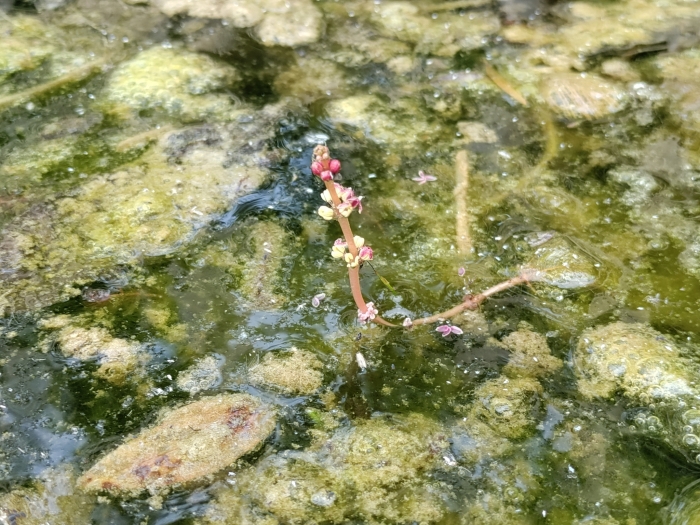Eurasian Watermilfoil
(Myriophyllum spicatum)
Eurasian Watermilfoil (Myriophyllum spicatum)
/
/

David Sandler
CC BY 4.0
Image By:
David Sandler
Recorded By:
Copyright:
CC BY 4.0
Copyright Notice:
Photo by: David Sandler | License Type: CC BY 4.0 | License URL: http://creativecommons.org/licenses/by/4.0/ | Rights Holder: David Sandler | Publisher: iNaturalist | Date Created: 2023-05-29T10:41:35-07:00 |















































Estimated Native Range
Summary
Myriophyllum spicatum, commonly known as Eurasian watermilfoil, is a submerged aquatic perennial herb native to lakes, ponds, and calm river systems in Europe, Asia, and North Africa. It is characterized by its slender, branching stems that can grow up to 98 inches long, often forming dense underwater mats. The feathery, pinnate leaves are arranged in whorls around the stem, providing habitat for aquatic organisms. Above the water’s surface, the plant produces small, inconspicuous orange-red flowers on a spike during the summer months. Eurasian watermilfoil is known for its rapid growth and ability to spread, making it a popular choice for aquariums and water gardens.
Eurasian watermilfoil is valued for its ability to oxygenate water and provide cover for fish and other aquatic wildlife. However, due to its invasive nature, it is not recommended for planting in natural water bodies outside its native range, as it can outcompete native vegetation and alter aquatic ecosystems. In cultivation, it requires still or slow-moving water and can tolerate a wide range of water conditions. Gardeners should be cautious of its potential to spread and monitor its growth regularly.CC BY-SA 4.0
Eurasian watermilfoil is valued for its ability to oxygenate water and provide cover for fish and other aquatic wildlife. However, due to its invasive nature, it is not recommended for planting in natural water bodies outside its native range, as it can outcompete native vegetation and alter aquatic ecosystems. In cultivation, it requires still or slow-moving water and can tolerate a wide range of water conditions. Gardeners should be cautious of its potential to spread and monitor its growth regularly.CC BY-SA 4.0
Plant Description
- Plant Type: Herb
- Height: 1-6 feet
- Width: 1-3 feet
- Growth Rate: Rapid
- Flower Color: Green, Yellow
- Flowering Season: Summer
- Leaf Retention: Deciduous
Growth Requirements
- Sun: Full Sun, Part Shade
- Water: High, Aquatic
- Drainage: Standing
Common Uses
Water Garden
Natural Habitat
Lakes, ponds, and calm river systems in Europe, Asia, and North Africa
Other Names
Common Names: Water Featherfoil, Spiked Water-Milfoil, Spike Water-Milfoil
Scientific Names: , Myriophyllum spicatum, Myriophyllum spicatum subsp. spicatum, Myriophyllum spicatum var. baicalense, Myriophyllum spicatum var. baicalense, Myriophyllum spicatum var. majus, Myriophyllum spicatum var. minus, Myriophyllum spicatum var. spicatum, Myriophyllum spicatum var. tenellum, Myriophyllum verticillatum subsp. spicatum
GBIF Accepted Name: